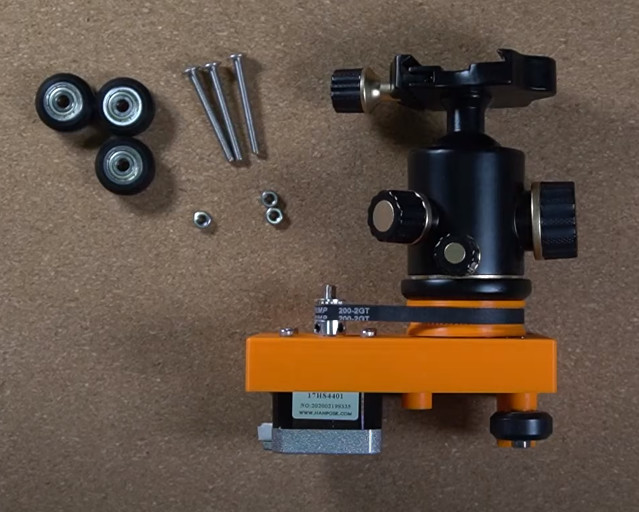ESP32 Camera Slider Build Keeps Things in Perspective

We’ve seen a lot of camera slider builds here at Hackaday, and for good reason: having one really lets you take your project documentation, especially videos, to the next level. It’s one of those force multiplier builds — after you’ve completed it, it can help you make all your future projects just that much better. But we’re also no strangers to seeing these projects become overly complex, which can often make it difficult for others to replicate.
But that’s not the case here. The motorized camera slider that [Sasa Karanovic] recently sent our way does exactly what you’d expect, and little else. That’s not meant as a dig — sometimes the best approach is to keep it simple. Unless you’re a professional photographer or videographer, it’s unlikely you need a complicated motion rig. This design is perfect for the hacker or maker who wants to spruce up their project videos, but doesn’t want to spend months fiddling with the design.

The build centers around a single piece of 2020 aluminum extrusion, the length of which really depends on the kind of shots you’re looking to take. Regardless of length, it gets capped off with a handful of 3D printed components which allow a standard NEMA 17 stepper motor to move a small wheeled cart back and forth along the length of the extrusion via a GT2 timing belt. There’s even an end-stop switch on one side of the extrusion, which let’s the electronics “home” the camera during startup.
Aboard the wheeled platform you’ll find a second NEMA 17 stepper, this time used to rotate a platform to which a commercial phone/camera mount has been attached. Combined with the lateral translation along the extrusion, this allows the software to keep a subject in the center of the frame while the camera moves.
Speaking of which, [Sasa] has not only released the hardware for this camera slider as an open source project, but also the source code for the ESP32 firmware which lets you control the whole thing from a web browser. As demonstrated in the video below, the interface provides the user with a simple way of manually adjusting variables such as camera speed and rotation. If given a specific duration for the camera pan operation to last, it can even figure out the appropriate speed automatically.
What’s that? Still too many parts for your liking? We’ve covered less technically complex sliders in the past if you’re really looking for the bare minimum, but for our money, we think [Sasa] has struck an excellent balance with this design: it’s got enough features to provide professional-looking results, without being so complex that it can’t be put together in a weekend.
Post a Comment